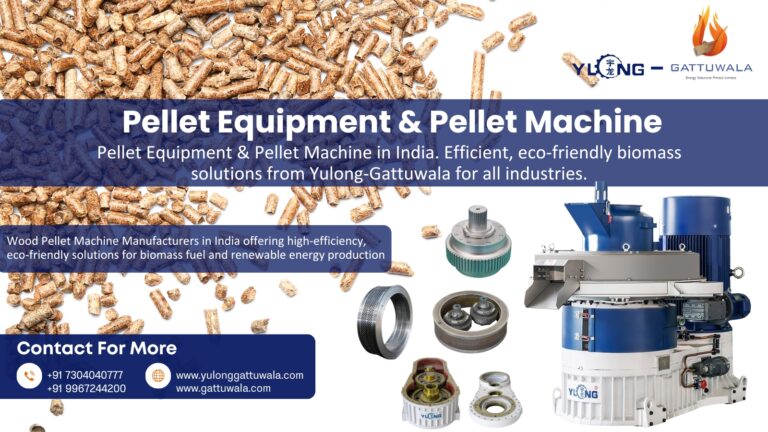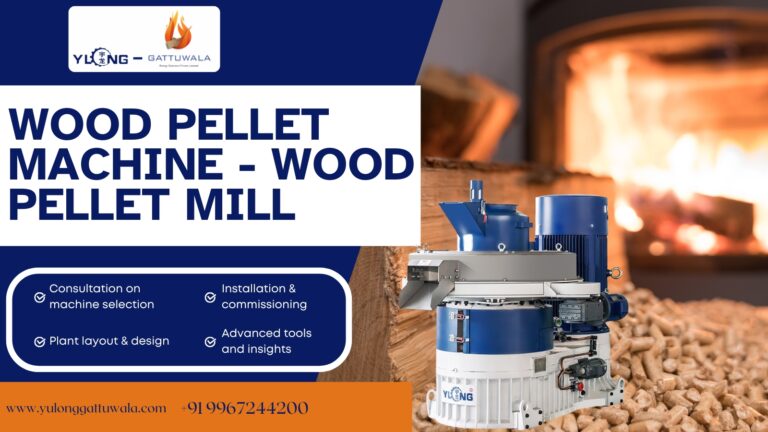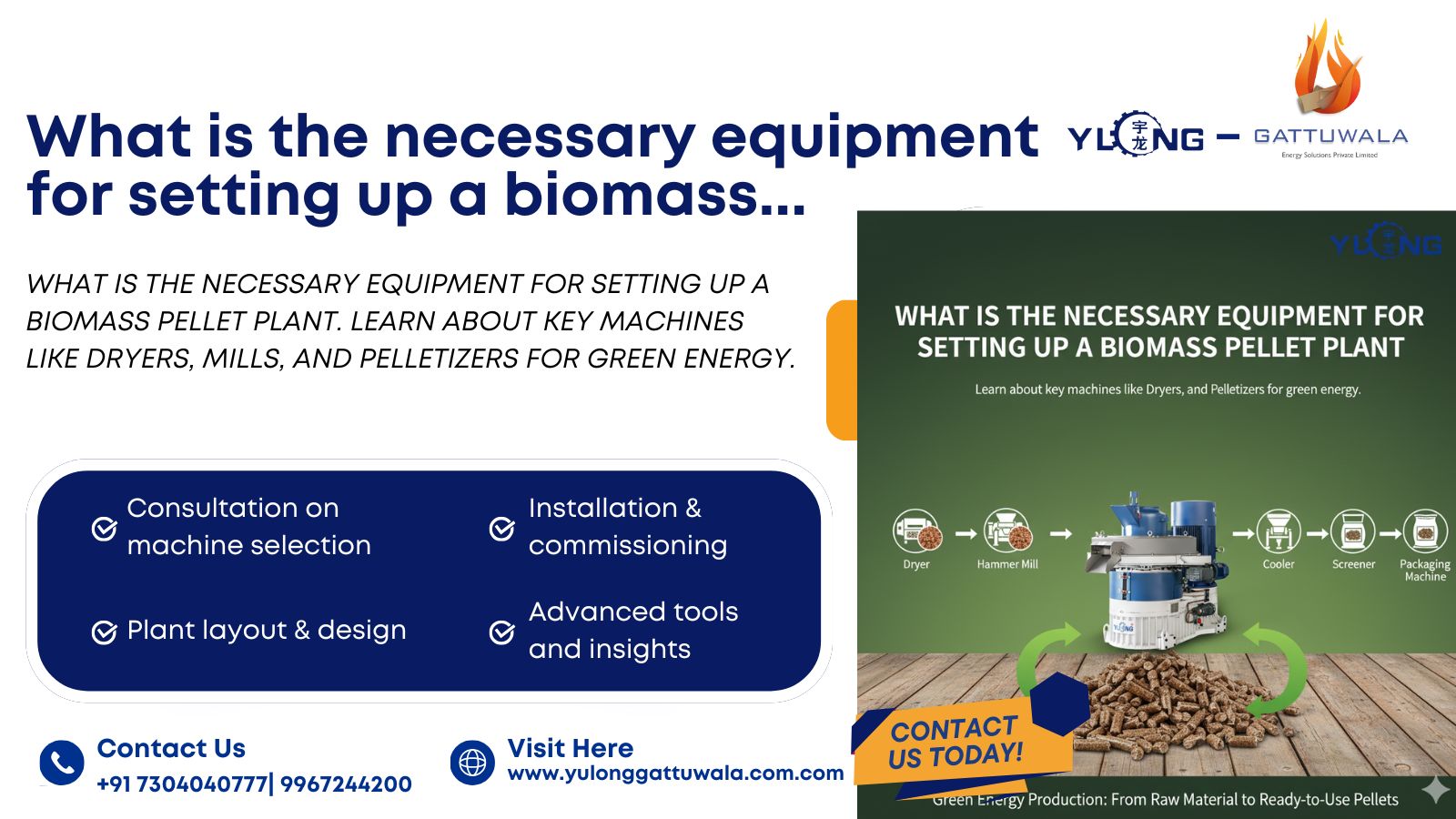- November 4, 2025

As the demand for renewable energy grows, biomass pellet plants are becoming increasingly popular across India. These plants transform agricultural and forestry waste into high-density fuel pellets used in industries, boilers, and power plants. But before you start, it’s vital to understand what equipment is necessary for setting up a biomass pellet plant and how each component contributes to efficient production.
The first step in biomass pellet production is handling and preparing raw materials. Agricultural residues like paddy straw, sawdust, rice husk, sugarcane bagasse, and wood chips need to be cleaned and organized.
• Conveyors & Feeders: Transport raw materials from storage to processing units.
• Crushers or Shredders: Break large-sized waste into smaller, uniform particles.
• Magnetic Separators: Remove metal impurities to protect the pellet machine.
This stage ensures that the feedstock is consistent in size and safe for further processing.
Once the raw materials are cleaned, they must be ground into fine powder. The biomass hammer mill is crucial here. It grinds raw materials into smaller particles, generally 3–5 mm, suitable for pelletizing.
A properly ground feedstock ensures smooth pelletizing and consistent pellet density. Modern hammer mills are energy-efficient and reduce operational costs significantly.
Moisture content plays a major role in pellet quality. Raw materials typically contain 30–50% moisture, while ideal pelletizing moisture is around 10–15%.
A biomass dryer—such as a flash dryer or rotary drum dryer—removes excess moisture efficiently. Drying ensures durability, prevents mold growth, and improves combustion efficiency in final pellets.
The pellet mill is the heart of a biomass pellet plant. It compresses ground and dried biomass into dense cylindrical pellets using rollers and a ring die.
Top manufacturers like Yulong-Gattuwala provide pellet machines with capacities ranging from 1 to 15 tons per hour. These machines feature:
• High compression efficiency
• Energy-saving motors
• Advanced control systems
• Long-lasting die and roller life
Choosing a reliable pellet machine ensures continuous, high-quality production with minimal maintenance.
5. Cooling and Screening Equipment
After pelletizing, pellets exit the machine hot and soft. The pellet cooler reduces their temperature, hardens them, and improves durability.
Then, a vibrating screen separates fine dust or broken pellets, ensuring only perfect, uniform pellets move to the packaging stage.
6. Pellet Packaging System
Finally, the finished pellets are packed using automatic bagging machines. Proper packaging helps preserve pellet quality during storage and transportation. Bags can range from 15 to 50 kg depending on commercial needs.
7. Additional Optional Equipment
• Cyclone dust collectors: For clean air and dust removal.
• Silos: For raw material and pellet storage.
• PLC control panels: For smart plant automation and real-time monitoring.
Setting up a biomass pellet plant in India requires the right combination of efficient machinery and smart workflow. From raw material handling to pellet packaging, every piece of equipment plays a key role in ensuring profitability and sustainability.
If you’re planning to invest in biomass energy, Yulong-Gattuwala offers complete pellet production lines, technical setup guidance, and after-sales support—making your journey from agro waste to green energy seamless and successful.
📞 Interested in setting up a biomass pellet plant in India? Contact Gattuwala Energy for expert consultation, equipment, and government subsidy support.


Pellet Equipment & Pellet Machine


